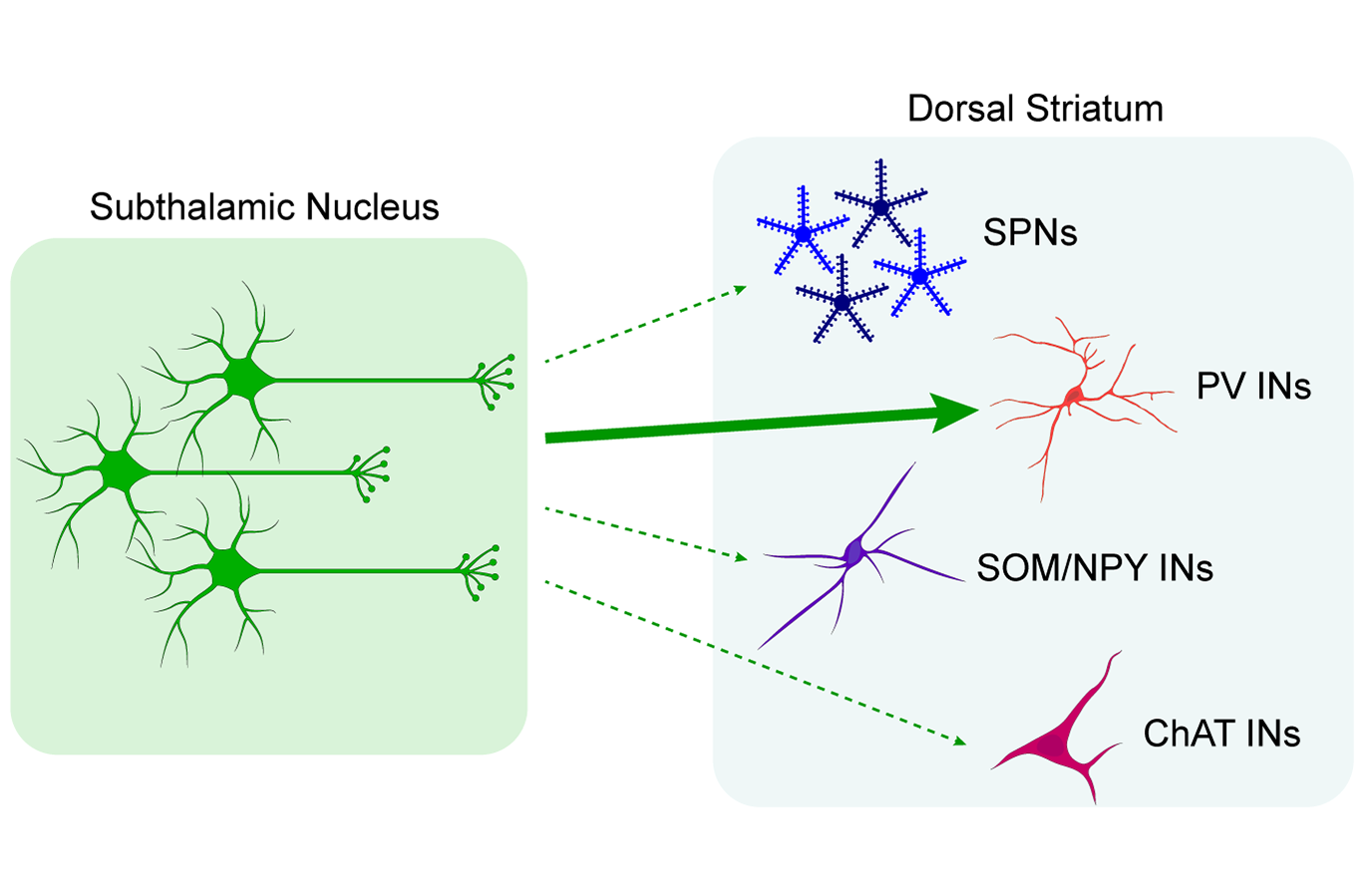A Selective Projection from the Subthalamic Nucleus to Parvalbumin-Expressing Interneurons of the Striatum.
The subthalamic nucleus (STN) and striatum are two brain regions important for movement. Here, we tested in mice whether the STN has biased influences on different types of nerve cell in striatum. We discovered that STN connections to nerve cells called parvalbumin-expressing interneurons are relatively enriched and impactful. These specialised connections could fulfil diverse and likely unique roles in the brain.
The striatum and subthalamic nucleus (STN) are considered to be the primary input nuclei of the basal ganglia. Projection neurons of both striatum and STN can extensively interact with other basal ganglia nuclei, and there is growing anatomic evidence of direct axonal connections from the STN to striatum. There remains, however, a pressing need to elucidate the organization and impact of these subthalamostriatal projections in the context of the diverse cell types constituting the striatum. To address this, we conducted monosynaptic retrograde tracing from genetically-defined populations of dorsal striatal neurons in adult male and female mice, quantifying the connectivity from STN neurons to spiny projection neurons, GABAergic interneurons, and cholinergic interneurons. In parallel, we used a combination of electrophysiology and optogenetics to characterize the responses of a complementary range of dorsal striatal neuron types to activation of STN axons. Our tracing studies showed that the connectivity from STN neurons to striatal parvalbumin-expressing interneurons is significantly higher (∼4- to 8-fold) than that from STN to any of the four other striatal cell types examined. In agreement, our recording experiments showed that parvalbumin-expressing interneurons, but not the other cell types tested, commonly exhibited robust monosynaptic excitatory responses to subthalamostriatal inputs. Taken together, our data collectively demonstrate that the subthalamostriatal projection is highly selective for target cell type. We conclude that glutamatergic STN neurons are positioned to directly and powerfully influence striatal activity dynamics by virtue of their enriched innervation of GABAergic parvalbumin-expressing interneurons.

2023. eNeuro, 10(7).